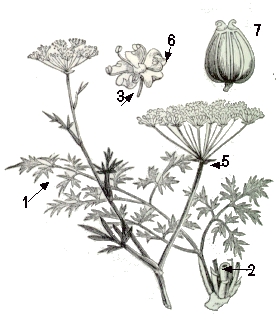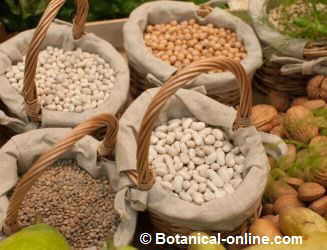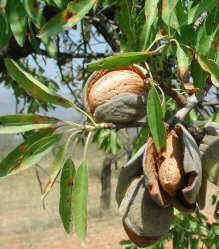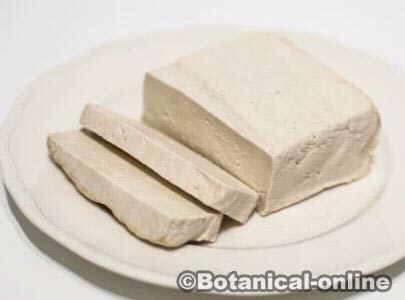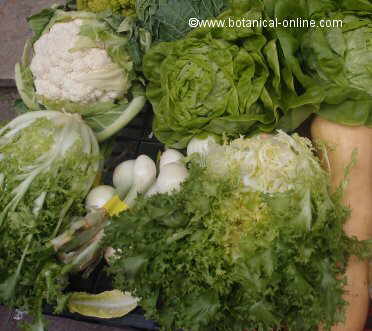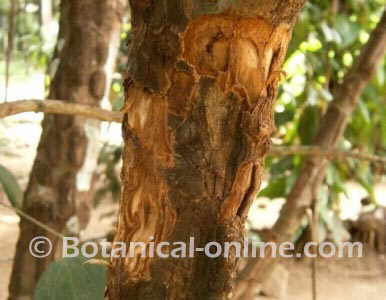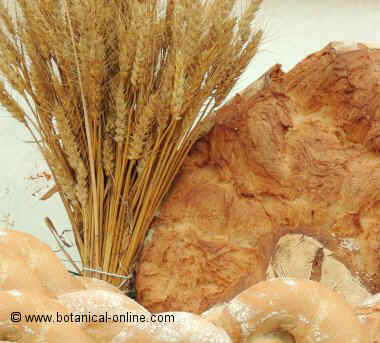Characteristics of carrot family plants
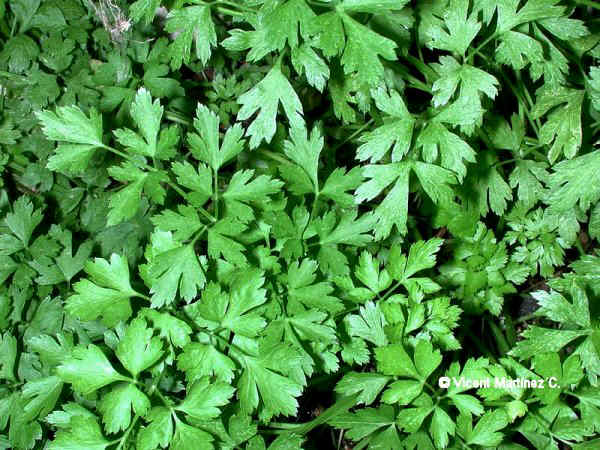
The Carrot family – umbelliferae – contains about 3000 species of plants dispersed throughout the world, specially in the North Hemisphere.
They are plants very well known as spices or because their medicinal properties, because of the great amount of essential oils they contain.
Some of the, as hemlock, for example, exemplify very strong poisons.
| Leaves (1): compound, alternate, with a decurrent sheath. Stem (2): fistulous, generally herbaceous with big internodes. Flowers: (3) Group in umbels, formed of main and secondary ones. The main umbels show at their base a ring of bracts, called involucre (4) and the secondary ones another ring, known as involucel (5). Flowers are placed in the secondary umbels. |
Petrosinilum crispum |
| Calyx: 5 o 0 sepals | 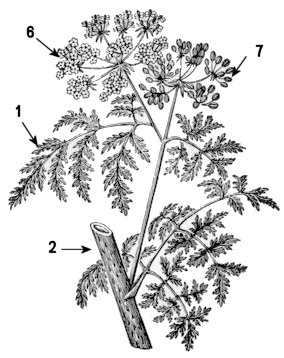 Conium maculatum |
| Petals (6): 5 | |
| Stamens: 5 Styles: 2, a nectariferous stylopodium over it. Fruit (7): Diachene |
Genera
It includes the main genera:
| AETHUSA AMMI AMMOIDES ANETHUM ANGELICA ANTHRISCUS APIUM ASTRANTIA ATHAMANTA BERULA BIFORA BRACHYAPIUM BUNIUM BUPLEURUM CACHRYS CAPNOPHYLLUM CARUM CAUCALIS CHAEROPHYLLUM CICUTA CONOPODIUM CRITHMUM CUMINUM DAUCUS DETHAWIA ECHINOPHORA ELAESOLINUM ENDRESSIA FALCARIA FERULA FERULAGO FOENICULUM HERACLEUM HOHEHACKERIA HYDROCOTYLE | KUNDMANNIA LAGOECIA LASERPITIUM LEVISTICUM LIGUSTICUM MAGYDARIS MEUM MOLOPOSPERMUM MYRRHIS MYRRHOIDES NAUFRAGA ONEANTHE OPOPANAX ORLAYA PASTINACA PEUDEDANUM PHYSOSPERMUM PIMPINELLA PSEUDORLAYA PTYCHOTIS RIDOLFIA SANICULA SCANDIX SELINUM SESELI SILAUM SISON SIUM SMIRNIUM THAPSIA TORDYLIUM TORILIS TRINIA TURGENIA XATARTIA |
![]() More information on plants
More information on plants

